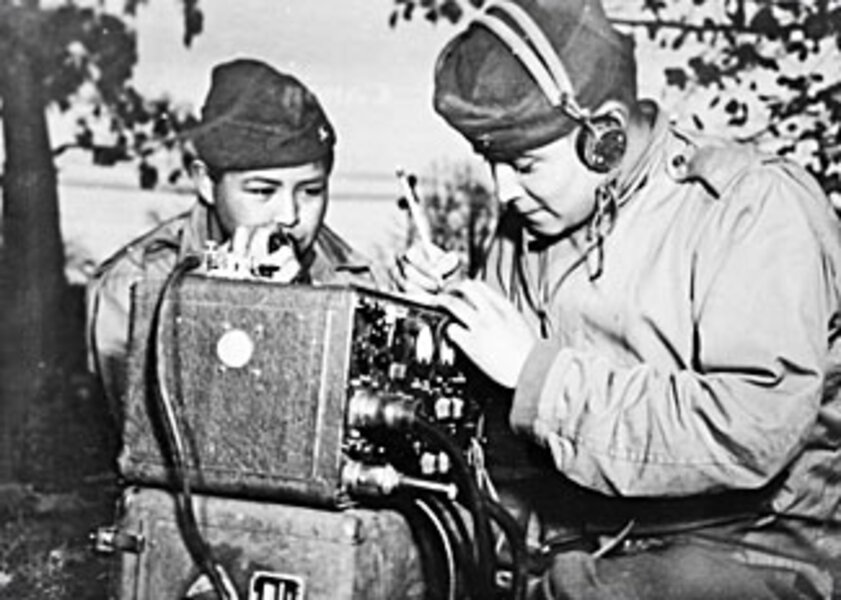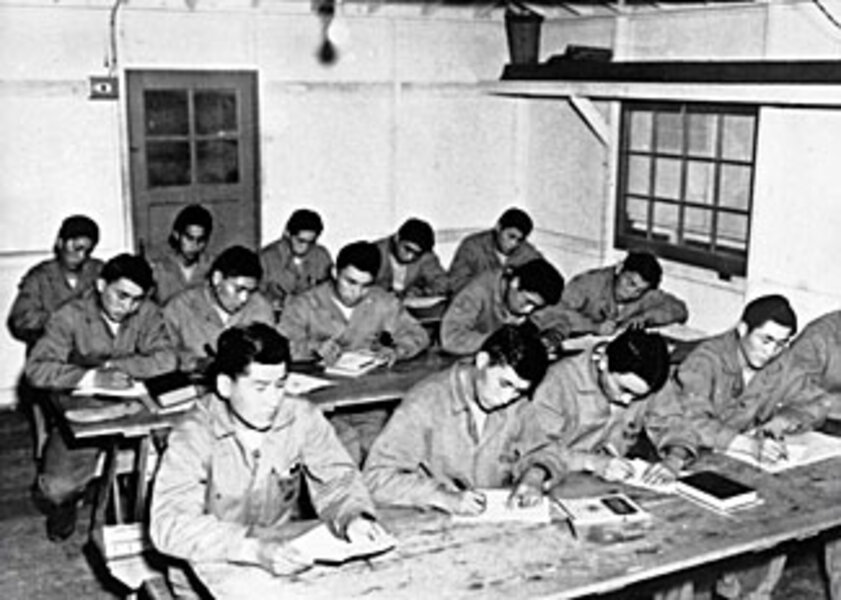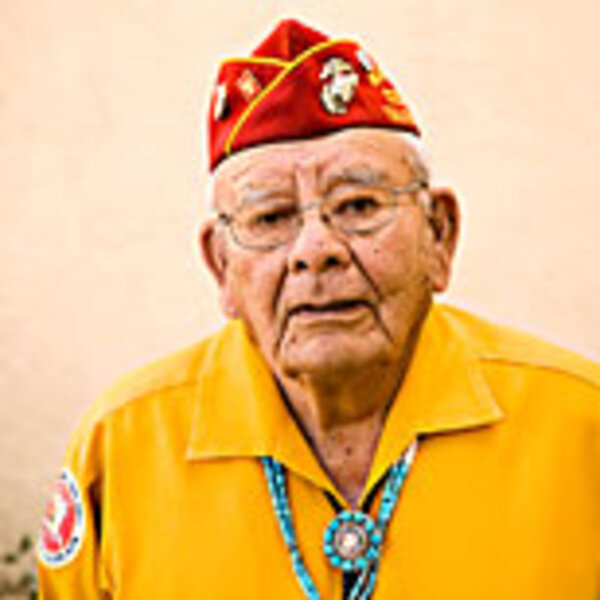Navajo 'code talkers' honored on Veterans Day
Loading...
It was the one code the Japanese couldn't crack.
Based on the Navajo language, the code helped the US communicate clandestinely during World War II – and ultimately contributed to victory in the Pacific theater.
But it wasn't a direct translation of Navajo, says Keith Little, a former United States Marine and Navajo Code Talker. Along with other code talkers, he relayed messages in the Marshall Islands, Saipan, and Iwo Jima.
On Wednesday, Little reunited with 12 other Navajo Code Talkers for the New York Veterans Day parade. Together they rode a float and waved to crowds that cheered them as they passed.
"The reception was good, and it kind of makes you feel good that you're someone different," Little said by phone after the parade.
That attention has been a long time coming for the code talkers. For more than 20 years after they helped the allies win World War II, the code – considered an invaluable military asset – was classified. The code talkers were not formally honored by the US government until 2001, nearly 60 years after the code's creation, when they were awarded the Congressional Gold Medal.
Now, due largely to that long silence, the remaining code talkers worry their story will die with their aging ranks.
"We want to build our legacy and our history," says Little.
To do so, the surviving Navajo veterans are working to create a museum that will teach new generations about the code talkers' contributions during World War II.
Little decided to enlist to "fight for my country."
"I just wanted to do some fighting with the Japanese for what they had done at Pearl Harbor," he says.
Half way through boot camp, a superior asked Little if he was an American-Indian, and then if he was a Navajo. When he answered yes, he was told the Marines were looking for Navajos, and he was sent to a communication school to learn the code.
"We had a list of battlefield vocabulary," Little explains. "There's ten or 12 pages, 50 words to a page and each one of those lists vocabulary."
That meant by war's end there were over 600 terms, which code talkers were required to commit to memory.
Despite its depth, the code has been admired for its simplicity. The correlations between words and their terms were relative simple. For example, the Navajo word for turtle meant "tank" and a dive-bomber was a "chicken hawk."
But even if intercepted, the code was impossible to break.
"Even if he catches all of the words, he will not understand it," says Little. "And if they manage to translate it, it would not mean anything."
See also:
Veterans Day is a teachable moment for many US schools
Veterans Day highlights new efforts to help homeless vets
-----







